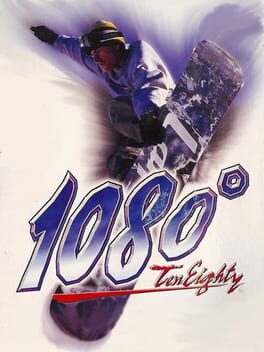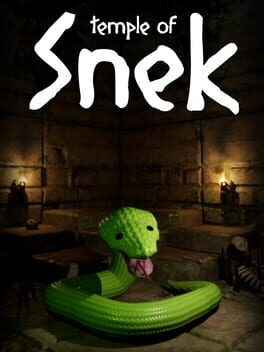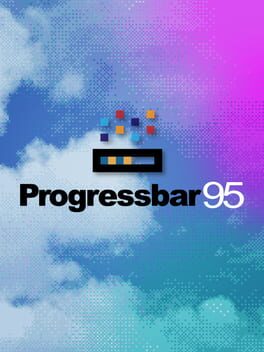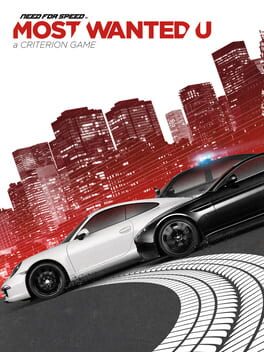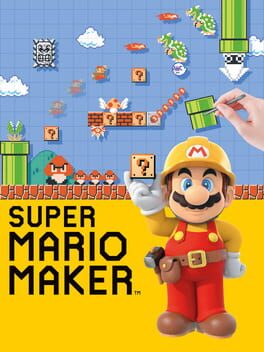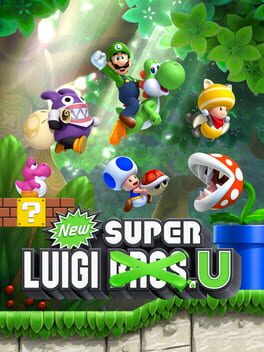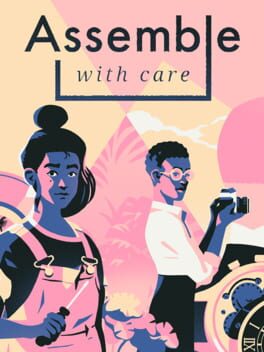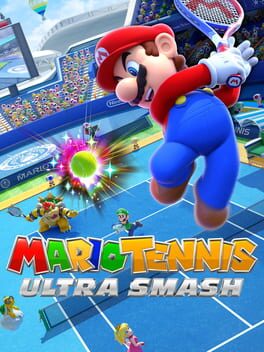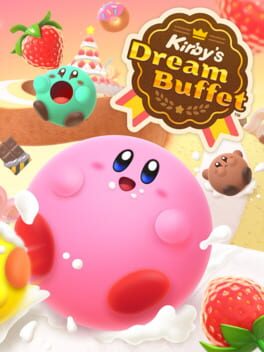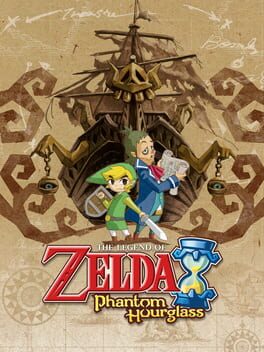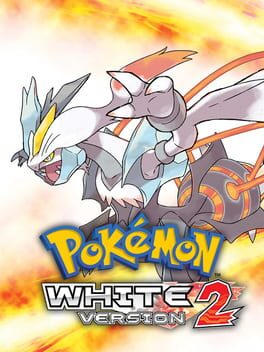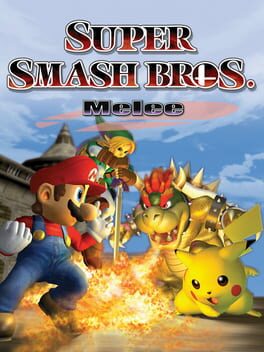SNESmapper
BACKER
1998
At the time of its release, this was the best looking snowboarding game out there. Gameplay has always had mixed opinions among players but I personally enjoyed the nod towards realistic controls and physics-based approach versus arcadey gameplay. Just like with Wave Race 64, the key was being patient in order to put time to understand the weight of the characters and how the different types of snow surfaces and types of mounds affected racing down the slopes.
Upon learning how physics worked in this game you are able to come up with some nifty tricks and shortcuts on different levels. One that personally stood out for me was at the last stage where the shortcut was massive and required riding the snowboard on bare rock surface down the mountain but it was a huge time saver and a really fun shortcut to discover.
Graphics and presentation were top notch for the time with "realistic" character models and incredible looking snow effects depending on the type of surface (powder, regular snow, ice, etc.).
Despite carrying the name of a trick in its title, I personally never enjoyed much the trick scoring mode and the controls and commands for pulling some of the best tricks were simply not very intuitive and plain challenging and frustrating just for the sake of it (was only able to pull a 1080 trick once or twice).
All in all 1080 Snowboarding was a great title to explore when it came out back in the day and I have tons of good memories playing the game.
Upon learning how physics worked in this game you are able to come up with some nifty tricks and shortcuts on different levels. One that personally stood out for me was at the last stage where the shortcut was massive and required riding the snowboard on bare rock surface down the mountain but it was a huge time saver and a really fun shortcut to discover.
Graphics and presentation were top notch for the time with "realistic" character models and incredible looking snow effects depending on the type of surface (powder, regular snow, ice, etc.).
Despite carrying the name of a trick in its title, I personally never enjoyed much the trick scoring mode and the controls and commands for pulling some of the best tricks were simply not very intuitive and plain challenging and frustrating just for the sake of it (was only able to pull a 1080 trick once or twice).
All in all 1080 Snowboarding was a great title to explore when it came out back in the day and I have tons of good memories playing the game.
1996
At first glance and play, Wave Race 64 seemed like it was a relatively short and small content game. However, the more you play and the better you get you realize that there is a ton of depth in its gameplay and progressing through the different circuits becomes a challenge that tests the skill of level and patience of players.
Being a launch/early Nintendo 64 game, this game was set to impress gamers with its clean water effects and level details. Gameplay is where the game really shines though. In order to master the later circuits and difficulty levels the player must gain an advanced understanding of the physics of the game ranging from the weight of the jet skis, the weight of the character you choose, and most importantly the waves. Depending on how you land and move your jet ski you will be able to gain precious fractions of seconds in corners that end up adding up and aid the player get through the most challenging difficulties. The AI can be infuriating in later difficulties to the point that it feels unfair, forcing the player to have near-perfect runs.
Other gameplay features such as waving through buoys to gain speed and performing tricks add to the strategy and replay value of the game.
Wave Race 64 may not have a huge amount of content but it really set the bar for gameplay in terms of racing games. For whatever reason, it has remained somewhat of an obscure cult game in Nintendo's history but for those of us who have played it and enjoyed it back in the day, it's yet another instant classic from Nintendo.
Being a launch/early Nintendo 64 game, this game was set to impress gamers with its clean water effects and level details. Gameplay is where the game really shines though. In order to master the later circuits and difficulty levels the player must gain an advanced understanding of the physics of the game ranging from the weight of the jet skis, the weight of the character you choose, and most importantly the waves. Depending on how you land and move your jet ski you will be able to gain precious fractions of seconds in corners that end up adding up and aid the player get through the most challenging difficulties. The AI can be infuriating in later difficulties to the point that it feels unfair, forcing the player to have near-perfect runs.
Other gameplay features such as waving through buoys to gain speed and performing tricks add to the strategy and replay value of the game.
Wave Race 64 may not have a huge amount of content but it really set the bar for gameplay in terms of racing games. For whatever reason, it has remained somewhat of an obscure cult game in Nintendo's history but for those of us who have played it and enjoyed it back in the day, it's yet another instant classic from Nintendo.
2021
Most of this review is based on the Early Access version of the game.
Temple of Snek combines the tried and true gameplay of the classic Snake game (popularized by Nokia phones in the late 90s and early 00s) with dungeon crawling and puzzle elements. It's a very interesting mix of concepts and works relatively well when it wants to.
The game can be confusing at first but after you solve the first few puzzles and make your way through some rooms you get the hang of it. With that being said, the overall design did not impress me much. Gameplay can be slow and a bit frustrating since no matter what you still have to wait for your snake's movement to properly progress through the levels (use 'F' to move snake faster).
Temple of Snek combines the tried and true gameplay of the classic Snake game (popularized by Nokia phones in the late 90s and early 00s) with dungeon crawling and puzzle elements. It's a very interesting mix of concepts and works relatively well when it wants to.
The game can be confusing at first but after you solve the first few puzzles and make your way through some rooms you get the hang of it. With that being said, the overall design did not impress me much. Gameplay can be slow and a bit frustrating since no matter what you still have to wait for your snake's movement to properly progress through the levels (use 'F' to move snake faster).
2019
This game is only meaningful to those of us that have actually used Microsoft's older operating systems from the early to mid 90s. The developer did a really good job of creating the look and feel of said OSes while applying a touch of humor with different minigames and pseudo OS interface exploration.
As you play and improve your skills in the provided minigames, you level up and are able to buy upgrades for your PC, as well as upgrades for your OS. Truthfully, the minigames are nothing special but the applied coat of old-school Windows system really adds a charming and interesting value to this release.
As you play and improve your skills in the provided minigames, you level up and are able to buy upgrades for your PC, as well as upgrades for your OS. Truthfully, the minigames are nothing special but the applied coat of old-school Windows system really adds a charming and interesting value to this release.
Despite thoroughly enjoying this game I never managed to go back and beat the game. With that being said, I put enough time into the game to enjoy it and unlock different cars and play different modes. The open world was not anything extraordinary, yet it was fun to explore it all while experiencing the most wanted theme with cops chasing you.
This Wii U version also brought some interesting extras to the table such as extra content, the ability to swap cars on the fly, and some other cool Wii U game pad content.
This Wii U version also brought some interesting extras to the table such as extra content, the ability to swap cars on the fly, and some other cool Wii U game pad content.
2012
A great pack-in title featuring different types of minigames in a Nintendo theme park environment to ultimately showcase the features of the (then) recently released Wii U console.
As with any minigame collection, some are better than others but for the most part they were fun. The same concept applied to the Wii U specific features, with the Ninja-star throwing minigame being one of the best implementations of the game pad. Overall, a fun package and a nice way of testing the Wii U system with friends.
As with any minigame collection, some are better than others but for the most part they were fun. The same concept applied to the Wii U specific features, with the Ninja-star throwing minigame being one of the best implementations of the game pad. Overall, a fun package and a nice way of testing the Wii U system with friends.
2015
I wish this game came out when I was younger and had more free time to invest in creating levels. This is basically what I dreamed of as a kid: being able to create/develop your own Mario levels and basically game.
The game is perfectly suited for the Wii U, making use of the gamepad and touch screen to arrange some of the features. Despite not offering every possible asset from every Mario game, the selection is ample enough to allow some very interesting and complex level designs. And it's in the user created levels where this game shines and offers an incredible array of community-based levels that range from incredibly creative to incredibly challenging.
The game also features a single-player mode that is fairly short but the true spirit of the game lies in the level creation and exploring what the Mario community came up with.
The game is perfectly suited for the Wii U, making use of the gamepad and touch screen to arrange some of the features. Despite not offering every possible asset from every Mario game, the selection is ample enough to allow some very interesting and complex level designs. And it's in the user created levels where this game shines and offers an incredible array of community-based levels that range from incredibly creative to incredibly challenging.
The game also features a single-player mode that is fairly short but the true spirit of the game lies in the level creation and exploring what the Mario community came up with.
2013
An interesting release from Nintendo featuring Luigi's own entry in the "New" Super Mario Bros platforming games.
The game features the same assets that have been used throughout the New series but more specifically the Wii U launch title New Super Mario Bros U which is a good thing since they feature colorful and crisp characters and backgrounds.
Thankfully, this is not a copy-paste from the Mario games and features its own gameplay quirks such as having to beat the levels under 100 seconds and physics that are particular to Luigi (longer higher jumps). While the gameplay variety was a welcomed addition, I ended up wanting more of a traditional platforming experience since I've never been a huge fan of speedrunning Mario games and more so the ones that have challenging levels like this game.
The game features the same assets that have been used throughout the New series but more specifically the Wii U launch title New Super Mario Bros U which is a good thing since they feature colorful and crisp characters and backgrounds.
Thankfully, this is not a copy-paste from the Mario games and features its own gameplay quirks such as having to beat the levels under 100 seconds and physics that are particular to Luigi (longer higher jumps). While the gameplay variety was a welcomed addition, I ended up wanting more of a traditional platforming experience since I've never been a huge fan of speedrunning Mario games and more so the ones that have challenging levels like this game.
2019
After thoroughly enjoying both Monument Valley games on Android, I was ready and excited to try other offerings from development studio ustwo games and thus, I arrived at Assemble With Care, a relaxing brief narrative game that focuses on helping people by assembling different types of items they own but need help repairing.
The game tries to mix a charming story with its core gameplay of assembling equipment but quite frankly, the story and characters are simply not engaging at all and very plain. The best part of the game is the assembling gameplay where you rotate objects while using other tools such as screwdrivers, glue, etc. to bring them to a working state. Items include music players, music boxes, coffee machines, etc. The problem is that the gameplay starts becoming dull quickly which is not ideal in a fairly short game like this one.
Due to the low price of admission when the game is on sale, it may be worth trying if you are looking for a very relaxed experience (with a chill soundtrack and fully voiced scenes) and gameplay devout of any challenge (since you can't really fail any levels), otherwise, this was a below average experience for me with the dull and plain characters and story progression.
The game tries to mix a charming story with its core gameplay of assembling equipment but quite frankly, the story and characters are simply not engaging at all and very plain. The best part of the game is the assembling gameplay where you rotate objects while using other tools such as screwdrivers, glue, etc. to bring them to a working state. Items include music players, music boxes, coffee machines, etc. The problem is that the gameplay starts becoming dull quickly which is not ideal in a fairly short game like this one.
Due to the low price of admission when the game is on sale, it may be worth trying if you are looking for a very relaxed experience (with a chill soundtrack and fully voiced scenes) and gameplay devout of any challenge (since you can't really fail any levels), otherwise, this was a below average experience for me with the dull and plain characters and story progression.
I'm a big fan of the Mario Tennis series and this particular entry is my least favorite one. Not sure if releasing this game late into the Wii U lifecycle had anything to do with the lack of content and the overall low-effort feel on behalf of Nintendo.
Graphics are colorful and appropriate for a Mario Tennis game but the overall gameplay and feel for the game feel off, rushed, and low-effort.
Graphics are colorful and appropriate for a Mario Tennis game but the overall gameplay and feel for the game feel off, rushed, and low-effort.
2022
As other gamers and reviewers have pointed out, this game follows the Fall Guys concept of different competitive multiplayer stages that pit players against each other.
In this particular game, the stages are mostly races that allow the player to collect fruit as the level advances and one gets closer to the finish line. The first player to reach the finish line gets the advantage of obtaining the first fruit prize (50) which helps boost the final fruit count. With that being said, the key is to find a good balance of collecting food/fruits as the level progresses as well as using items to knock enemies out of the way and preventing them from gathering food as much as possible.
Graphics are good and the "buffet" themes for the different levels is fun to witness with different types of foods, sweets, fruits, etc. that are part of the stages themselves.
With all that being said, the gameplay feels like it gets stale fairly quickly despite the different levels offered and other modes such as minigames and all the collectibles that the player can gather as they level up. It's a decent and mildly fun game, but if you are looking for more within this concept, Fall Guys will better suit and fit your needs.
In this particular game, the stages are mostly races that allow the player to collect fruit as the level advances and one gets closer to the finish line. The first player to reach the finish line gets the advantage of obtaining the first fruit prize (50) which helps boost the final fruit count. With that being said, the key is to find a good balance of collecting food/fruits as the level progresses as well as using items to knock enemies out of the way and preventing them from gathering food as much as possible.
Graphics are good and the "buffet" themes for the different levels is fun to witness with different types of foods, sweets, fruits, etc. that are part of the stages themselves.
With all that being said, the gameplay feels like it gets stale fairly quickly despite the different levels offered and other modes such as minigames and all the collectibles that the player can gather as they level up. It's a decent and mildly fun game, but if you are looking for more within this concept, Fall Guys will better suit and fit your needs.
I won't lie, being a huge Zelda fan I was excited to try this game out and went in very confidently based on previous experience with the series where pretty much every game has been excellent. But Phantom Hourglass ended up disappointing me and discouraging me from completing the game and trying/firing up its sequel, Spirit Tracks.
There are some very innovative things in this game that make use of the DS dual screens and other features but on the flip side, there are many head scratchers in terms of game design and overall structure. Replaying the main temple/dungeon after you finish a main area is extremely annoying and punishing...not sure how that got approved or past Nintendo's QC process.
Maybe one day I will come back to this game, but overall I felt like the experience was not up to par for being a Zelda game.
There are some very innovative things in this game that make use of the DS dual screens and other features but on the flip side, there are many head scratchers in terms of game design and overall structure. Replaying the main temple/dungeon after you finish a main area is extremely annoying and punishing...not sure how that got approved or past Nintendo's QC process.
Maybe one day I will come back to this game, but overall I felt like the experience was not up to par for being a Zelda game.
This is typically regarded as one of the best Pokemon games out there by fans but I personally didn't feel much on my 15+ hour exploration of this game.
Besides the obvious graphics improvements and some quality-of-life features over older titles, this felt like a fairly regular Pokemon game to me (which is not necessarily a bad thing).
Besides the obvious graphics improvements and some quality-of-life features over older titles, this felt like a fairly regular Pokemon game to me (which is not necessarily a bad thing).
2008
Despite playing this game for a considerable amount of time, I never managed to fully finish/complete the game. With that being said, I was very excited to play this as I grew up a fan of Captain Tsubasa (different anime series that is also based on soccer) and this looked similar in its concept.
It's basically an RPG that features soccer gameplay, special moves, and strategy for every move you make. The first half of the game is very fun: you basically learn new moves, recruit friends and new players to your team and advance the story. The game falls a bit apart in the later stages as I felt the gameplay become a bit stagnant as well as the overall pacing and design of the game.
It's basically an RPG that features soccer gameplay, special moves, and strategy for every move you make. The first half of the game is very fun: you basically learn new moves, recruit friends and new players to your team and advance the story. The game falls a bit apart in the later stages as I felt the gameplay become a bit stagnant as well as the overall pacing and design of the game.
The Smash series is an interesting one for me. I love playing its games since I'm a big Nintendo fan and this is pretty much the ultimate fan service fest featuring characters, soundtrack, stages, and themes from anything Nintendo released over time including obscure franchises. But as much as I love playing these games and as much time as I put them, I never managed to become good at any of the games. Honestly, I treat these games as more of a party game with friends (which is kind of the original intent from Sakurai from what I understand).
Smash Bros. Melee featured a monumental jump in just about every category compared to its predecessor, the original Smash Bros for the Nintendo 64. For being only the second game in the series, Melee was loaded to the brim with characters, stages, trophies, collectibles, etc. making it a true dream for Nintendo fans. This is definitely up there for best game in the series and still to this date features the fast-paced gameplay that hardcore fans still praise and love.
Smash Bros. Melee featured a monumental jump in just about every category compared to its predecessor, the original Smash Bros for the Nintendo 64. For being only the second game in the series, Melee was loaded to the brim with characters, stages, trophies, collectibles, etc. making it a true dream for Nintendo fans. This is definitely up there for best game in the series and still to this date features the fast-paced gameplay that hardcore fans still praise and love.
